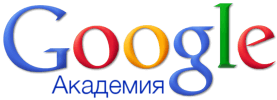Меню
Публикации
2025
2024
2023
2022
2021
2020
2019
2018
2017
2016
2015
2014
2013
2012
2011
2010
2009
2008
2007
2006
2005
2004
2003
2002
2001
Главный редактор

НИКИФОРОВ
Владимир Олегович
д.т.н., профессор
Партнеры
doi: 10.17586/2226-1494-2022-22-3-501-508
УДК 681.584
Синтез и реализация λ -подхода скользящего управления в системе теплопотребления
Читать статью полностью
Язык статьи - английский
Ссылка для цитирования:
Аннотация
Ссылка для цитирования:
Шилин А.А., Букреев В.Г., Перевощиков Ф.В. Синтез и реализация λ-подхода скользящего управления в системе теплопотребления // Научно-технический вестник информационных технологий, механики и оптики. 2022. Т. 22, № 3. С. 501–508 (на англ. яз.). doi: 10.17586/2226-1494-2022-22-3-501-508
Аннотация
Предмет исследования. Предложен новый подход к синтезу и реализации трехпозиционного релейного управления сложными динамическими объектами. Рассмотрена методика синтеза обратной связи релейного элемента в задачах робастного и оптимального по быстродействию управления системами теплопотребления. Методы. Представленный подход заключается в организации процедуры дифференцирования на релейном элементе, включенным в обратную связь системы управления. Основные результаты. Для демонстрации эффективности подхода выполнена сравнительная оценка результатов моделирования систем теплопотребления с релейным трехпозиционным управлением и традиционным линейно-квадратичным регулятором. Показаны графики переходных процессов действующих систем, которые подтверждают эффективность синтезированного релейного управления. Практическая значимость. Результаты работы найдут применение при разработке алгоритмов управления системами теплопотребления зданий и сооружений.
Ключевые слова: системы теплопотребления, лямбда-регулятор, скользящий режим, оптимальное по быстродействию управление, трехпозиционное релейное управление
Список литературы
Список литературы
-
Poznyak A.S. Sliding mode control in stochastic continuos-time systems: μ-zone MS-convergence // IEEE Transactions on Automatic Control. 2017. V. 62. N 2. P. 863–868. https://doi.org/10.1109/TAC.2016.2557759
-
Alibeji N., Sharma N.A PID-type robust input delay compensation methodfor uncertain Euler-Lagrange systems // IEEE Transactions on Control Systems Technology. 2017. V. 25. N 6. P. 2235–2242. https://doi.org/10.1109/TCST.2016.2634503
-
Guo X., Ren H.P. Robust variable structure control for three-phase PWM converter // Zidonghua Xuebao/Acta Automatica Sinica. 2015. V. 41. N 3. P. 601–610. (in Chinese). https://doi.org/10.16383/j.aas.2015.c140421
-
Zhu Q.D., Wang T.An improved design scheme of variable structure control for discrete-time systems//Zidonghua Xuebao/Acta Automatica Sinica. 2010.V. 36. N 6. P. 885–889. (in Chinese). https://doi.org/10.3724/SP.J.1004.2010.00885
-
Parra-Vega V., Fierro-Rojas J.D.Sliding PIDuncalibrated visual servoingfor finite-time tracking of planar robots//Proc. of the 2003 IEEE International Conference on Robotics and Automation (Cat. No.03CH37422).2003.V. 3. P. 3042–3047. https://doi.org/10.1109/ROBOT.2003.1242058
-
Choi H.H.LMI-based sliding surface design for integral sliding mode control of mismatched uncertain systems//IEEE Transactions on AutomaticControl. 2007. V. 52.N 4. P. 736–742. https://doi.org/10.1109/TAC.2007.894543
-
Huang Y.J., Kuo T.C., Chang S.H.Adaptive sliding-mode control fornonlinear systems with uncertain parameters//IEEE Transactions on Systems, Man, and Cybernetics, Part B: Cybernetics. 2008.V. 38.N 2. P. 534–539.https://doi.org/10.1109/TSMCB.2007.910740
-
Abdulgalil F., Siguerdidjane H. PID based on sliding mode control forrotary drilling system//Proc. of the EUROCON 2005 - The International Conferenceon "Computer as a Tool". 2005. V. 1. P. 262–265. https://doi.org/10.1109/EURCON.2005.1629911
-
Utkin V.I.Sliding Modes in Control and Optimization. Berlin, Germany:Springer,1992. 299 p.
-
Li X.B., Ma L., Ding S.H. A new second-order sliding mode control andits application to inverted pendulum //Zidonghua Xuebao/Acta AutomaticaSinica. 2015. V. 41.N 1.P. 193–202. (in Chinese). https://doi.org/10.16383/j.aas.2015.c140263
-
Li Y., Xu Q.Adaptive sliding mode control with perturbation estimationand PIDsliding surface for motion tracking of a piezo-driven micromanipulator //IEEE Transactions on Control Systems Technology. 2010.V. 18. N 4. P. 798–810. https://doi.org/10.1109/TCST.2009.2028878
-
Mu C.X., Yu X.H., Sun C.Y.Phase trajectory and transient analysisfor nonsingular terminal sliding modecontrol systems//Zidonghua Xuebao/Acta Automatica Sinica. 2013. V. 39. N 6.P. 902–908. (in Chinese). https://doi.org/10.3724/SP.J.1004.2013.00902
-
Bartolini G., Pydynowski P. An improved, chattering free, V.S.C. scheme foruncertain dynamical systems // IEEE Transactions on Automatic Control. 1996.V. 41.N 8.P. 1220–1226. https://doi.org/10.1109/9.533691
-
Bartolini G., Ferrara A., Usai E.Chattering avoidance by second-ordersliding mode control // IEEE Transactions on Automatic Control. 1998. V. 43. N 2. P. 241–246. https://doi.org/10.1109/9.661074
-
Bartolini G., Ferrara A., Usai E., Utkin V.I. On multi-input chattering-free second-order sliding mode control // IEEE Transactions on Automatic Control. 2000.V. 45. N 9. P. 1711–1717. https://doi.org/10.1109/9.880629
-
Zhang Y., Ma G.F., Guo Y.N., Zeng T.Y.A multi power reaching law ofsliding mode control design and analysis// Zidonghua Xuebao/Acta Automatica Sinica. 2016.V. 42. N 3.P. 466–472. (in Chinese). https://doi.org/10.16383/j.aas.2016.c150377
-
Kim N., Cha S., Peng H. Optimal control of hybrid electric vehicles basedon Pontryagin's minimum principle // IEEE Transactions on Control SystemsTechnology. 2011. V. 19. N 5. P. 1279–1287. https://doi.org/10.1109/TCST.2010.2061232
-
Клюев А.С., Колесников А.А.Оптимизация автоматических систем управления по быстродействию. М.:Энергоиздат, 1982. 239 с.
-
Kirk D.D. Optimal Control Theory. An Introduction. Englewood Cliffs, NJ: Prentice-Hall, 1970. 472 p.
-
Li Y., Wang Z., Zhu L. Adaptive neural network PID sliding mode dynamiccontrol of nonholonomic mobile robot // Proc. of the IEEE InternationalConference on Information and Automation. 2010. P. 753–757. https://doi.org/10.1109/ICINFA.2010.5512467
-
Khalil H.K. Nonlinear Systems. 3nd ed. Upper Saddle River, NJ: Prentice Hall, 2002. 750 p.
-
Liu T., Liu H.P. Quasi-sliding-mode control based on discrete reachinglaw with dead zone // Zidonghua Xuebao/Acta Automatica Sinica. 2011. V. 37. N 6. P. 760–766. (in Chinese). https://doi.org/10.3724/SP.J.1004.2011.00760
-
Shilin A.A., Bukreev V.G. The reduction of the multidimensional model of the nonlinear heat exchange system with delay // Communications in Computer and Information Science. 2014. V. 487. P. 387–396. https://doi.org/10.1007/978-3-319-13671-4_44
-
Shilin A.A., Bukreev V.G., Prohorov S. Pressure pump power control in the primary circuit of the heat exchange system //MATEC Web of Conferences. 2016. V. 91. P. 01043. https://doi.org/10.1051/matecconf/20179101043
-
Savrasov F.V., Prokhorov S.V., Shilin A.A. The computer simulation of hoarfrost's clearing process in the air recuperation system // Journal of Physics: Conference Series. 2017. V. 803. N 1. P. 012134. https://doi.org/10.1088/1742-6596/803/1/012134
















